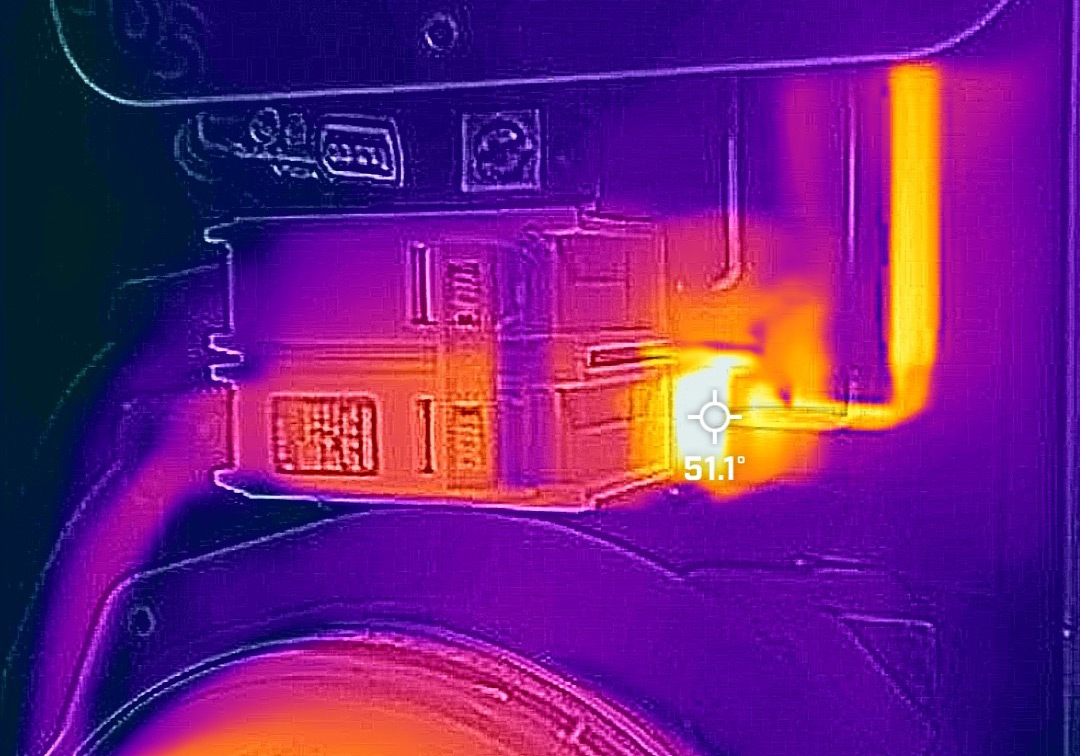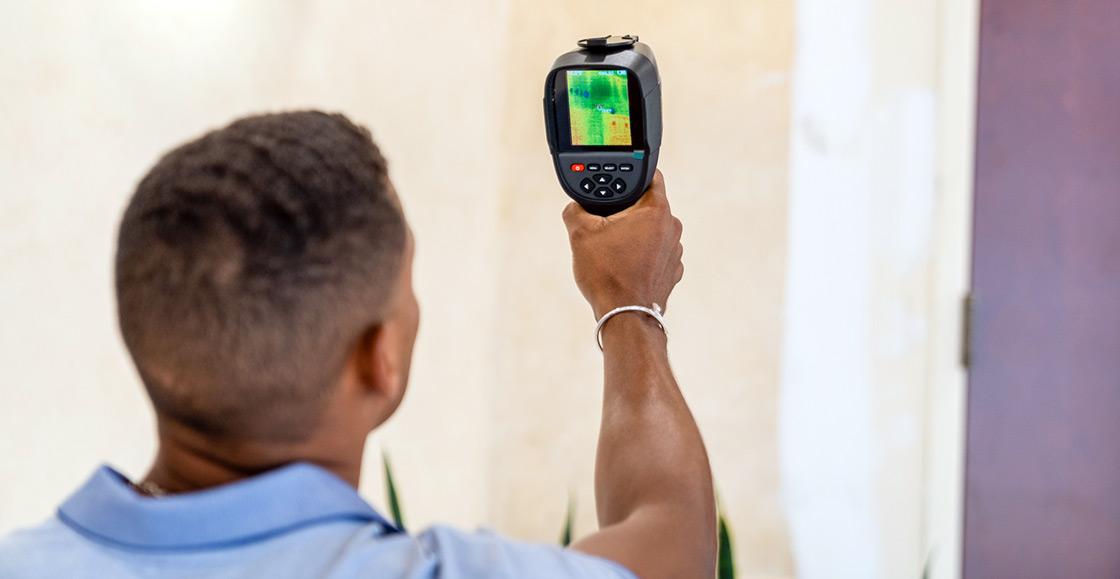Florida Infrared Thermography Inspection Services
Reveal Hidden Issues with Thermal Imaging During Your Next Building Inspection
At Building Mavens, we leverage advanced infrared thermography (thermal imaging) to uncover building problems that traditional inspections might miss. Our expert team uses cutting-edge infrared cameras to detect temperature anomalies behind walls, under roofs, and inside electrical systems, making the invisible visible. We stand at the forefront of this technology in South Florida, integrating it into building recertifications, property condition assessments, and turnover inspections to safeguard your investments and ensure occupant safety. With our blend of local expertise, deep regulatory knowledge, and unwavering commitment to quality, we don’t just conduct thermal scans; we provide peace of mind by identifying issues early and accurately. Your building’s performance, safety, and compliance are our top priorities.
Understanding Infrared Thermography
What Infrared Thermography Is
Infrared thermography is a non-invasive inspection method that uses specialized cameras to capture the heat emitted by building components and convert it into a visual image. Every material gives off some infrared radiation (heat), and even small temperature differences can signal potential problems. By translating heat data into color-coded images, thermography allows us to see temperature variations across surfaces. Warm areas might show up as bright yellow or white, while cooler spots appear as purple or blue. These patterns can reveal hidden moisture, insulation gaps, electrical hotspots, or structural stresses that are invisible to the naked eye. In essence, infrared thermography “makes the invisible visible” by highlighting anomalies that could indicate damage or safety concerns.
How Infrared Thermography Works

“Building Mavens has been integral in helping us be on the right track to comply and I know that through the end of our project, they will still be there until we have our final inspection. Their price was reasonable and their service and guidance exceeded expectations. We would use them again should/when further inspections are required.”
- Mari K., Manager of Sheridan by the Beach
Benefits & Key Applications
Infrared thermography is more than impressive technology; it’s a smart, non-invasive tool that uncovers what visual inspections often miss. Especially in South Florida’s challenging climate and regulatory landscape, thermal imaging enhances the effectiveness, accuracy, and safety of every inspection. Here’s how:
Reveal Hidden Issues
Thermal imaging detects water intrusion issues behind walls, wet insulation in flat roofs, electrical hot spots, and areas of energy loss; places invisible to the eye. Early detection allows targeted, cost-effective repairs before they become costly or hazardous.
Improve Safety
Infrared scans identify overheating electrical components, overloaded circuits, and moisture intrusion that can compromise structural integrity. Addressing these risks early helps prevent fires, mold, or major system failures, protecting both occupants and assets.
Boost Energy Efficiency
Poor insulation, drafty windows, and HVAC inefficiencies stand out clearly in thermal scans. Identifying these weak points allows for improvements that reduce energy bills and extend equipment life which are critical in South Florida’s extreme climate.
Non-Invasive & Cost-Effective
Thermal imaging is quick and non-destructive. It’s ideal for pinpointing the true source of a leak or electrical issue without disrupting operations. You avoid guesswork, unnecessary demolition, and wasted maintenance dollars.
Supports Recertification Compliance
In Miami-Dade and Broward, infrared inspections are now required for building recertifications when electrical systems exceed 400 amps. We deliver certified, regulation-compliant thermal reports that meet these local mandates, and we provide peace of mind for building owners.
Enhances Turnover & Condition Assessments
Adding infrared to turnover or property condition reports uncovers hidden defects like plumbing leaks, HVAC inefficiencies, or water intrusion. Whether documenting a new handover or planning long-term maintenance, thermography ensures no surprises down the line.
In short, infrared thermography enhances the accuracy, thoroughness, and safety of any building inspection. It empowers owners, engineers, and facility managers with actionable insights that would otherwise remain hidden. Especially in South Florida where intense sun, high humidity, salty coastal air, and stringent building safety rules cause faster wear and tear on our buildings. Thermal imaging has become an indispensable tool to maintain building integrity and occupant safety.

Why Choose Building Mavens?
Choosing the right partner for infrared inspection services is crucial. Building Mavens distinguishes itself through expertise, technology, and client-focused service, ensuring that you get maximum value from our infrared thermography inspections. Here’s why we stand out among South Florida’s other top engineering firms:
Schedule Your Infrared Inspection
Ready to take advantage of the power of infrared thermography for your building? Whether you have a pressing compliance deadline or you simply want the most thorough inspection available, Building Mavens is here to help. We believe that our infrared inspection services can save you time, money, and worry by illuminating issues early and clearly.
Protect your property and comply with confidence. By choosing Building Mavens for your Florida infrared thermography needs, you’re partnering with a team that values safety, integrity, and quality above all. Our deep local expertise, advanced technology, and proven track record ensure that you receive an accurate assessment and actionable results. We are dedicated to ensuring your building’s performance and safety now and for years to come – from preventing electrical failures to detecting hidden leaks before they cause catastrophic damage.
Don’t leave the unseen to chance. Contact Us to book your Infrared Thermography Inspection today and safeguard your investment.
Frequently Asked Questions
Broward and Miami-Dade Counties require buildings seeking recertification with electrical services operating at 400 amperes or more to have a thermography inspection. However, the individual equipment does not need to be rated at 400 amperes or more. Applicable equipment includes busways, switchgear, panelboards (except in dwelling unit load centers), disconnects, variable frequency drives (VFD), starters, control panels, timers, meter centers, gutter, junction boxes, automatic/manual transfer switches, exhaust fans, and transformers, which all require a thermography inspection. Condominium units are, however, excluded from the thermography inspection.
Infrared thermography uses thermal imaging to detect variations in temperatures across surfaces, identifying potential problems like water leaks, insulation failures, or electrical issues that are not visible to the naked eye.
Yes, by identifying areas of heat loss or gain, you can address insulation problems or air leaks, leading to more efficient energy use and lower utility bills.
Annual inspections are recommended to monitor the building’s condition over time, though more frequent checks may be necessary for buildings with known issues or after major repairs.
No. Thermography is a noninvasive method that does not require physical contact with surfaces, allowing inspections to be conducted without disrupting building occupants or operations.
It can detect various issues, including electrical hot spots, moisture intrusion, deficient insulation, and structural defects that could lead to energy loss or safety concerns.
When performed by trained professionals like our team at Building Mavens, thermography is highly accurate, providing a clear picture of potential issues that may not be visible through other inspection methods.
Yes, infrared thermography is versatile and can be applied to any type of building, from residential homes to large commercial or industrial facilities.
The time varies based on the building’s size and complexity, but most inspections can be completed within a day.
While infrared thermography doesn’t directly detect mold, it can identify conditions conducive to mold growth, such as moisture accumulation.
The cost of an infrared thermography inspection can vary widely based on several factors, including the size of the property, the complexity of the structures involved, and the specific requirements of the inspection. To get a precise estimate, it’s best to consult with us or any professional inspection service that offers infrared thermography. We will consider the specifics of your property, such as square footage, type of construction, and any particular areas of concern you have, to provide a tailored quote. Keep in mind that while cost is an important factor, the expertise of the inspector and the thoroughness of the inspection are the more important factors to consider for identifying potential issues and saving on future repair costs. When it comes to quality work, you typically get what you pay for.



